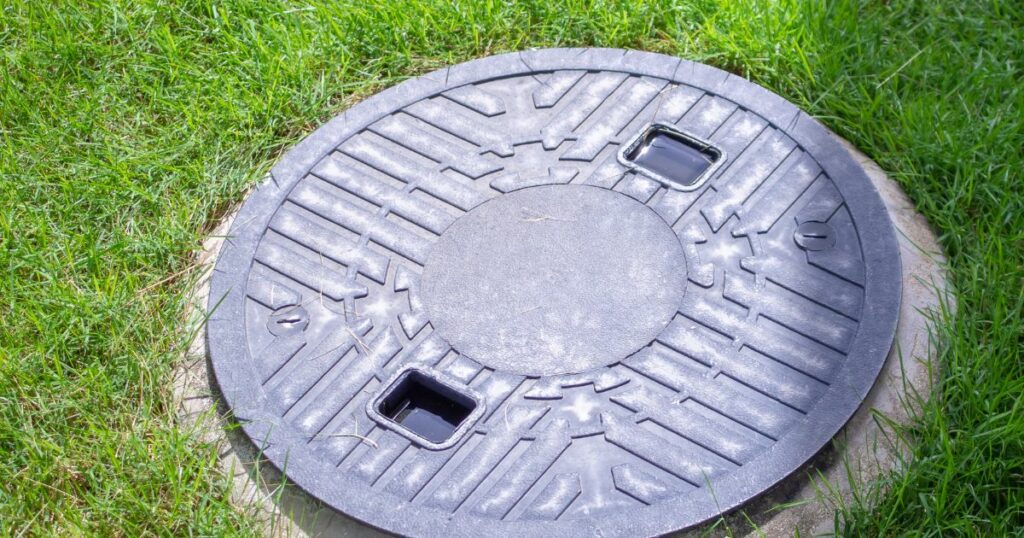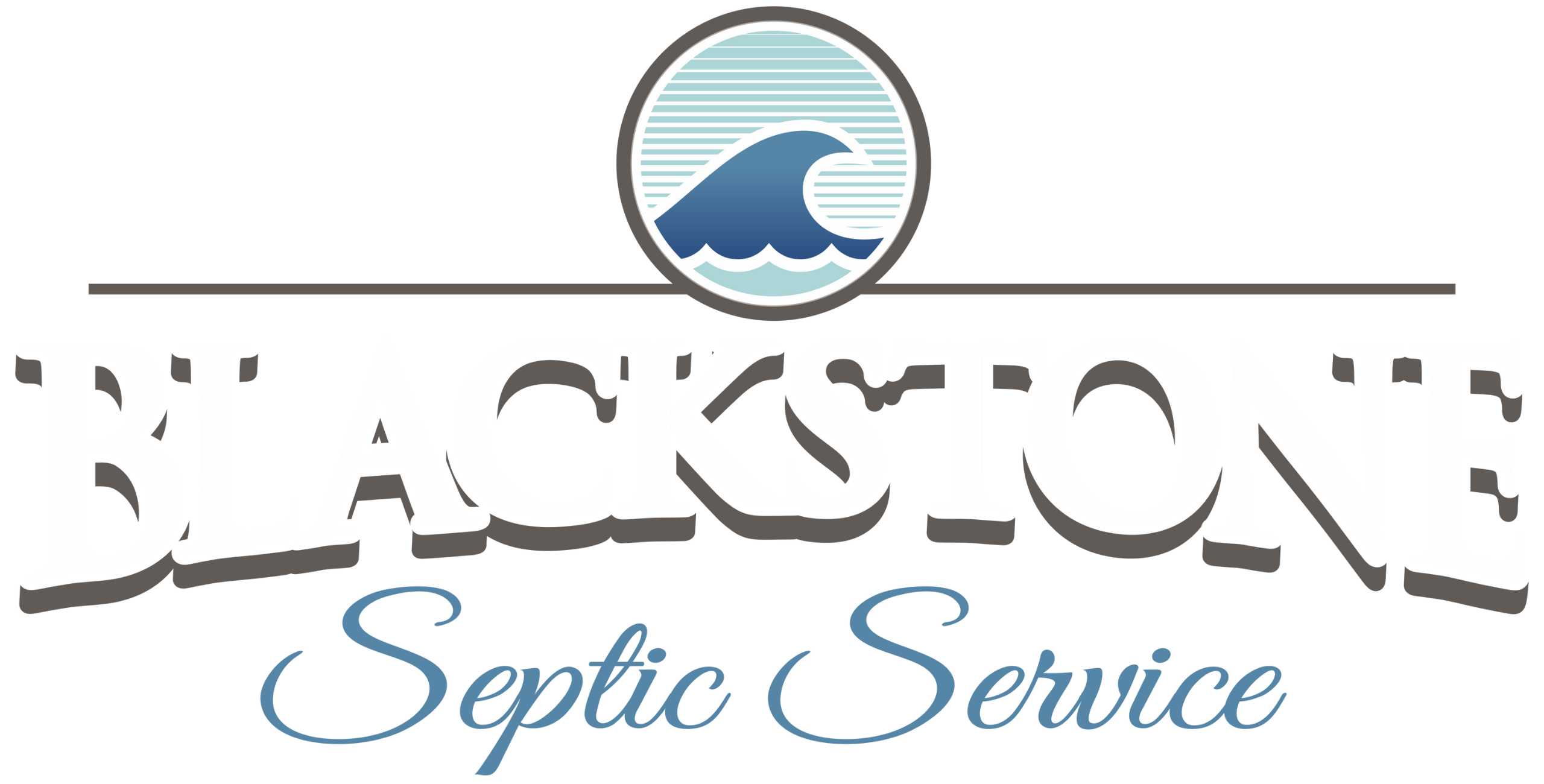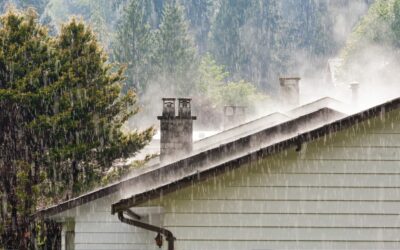Septic covers are a must for safety and hygiene but they don’t have to be an eyesore. With the right decorative cover, you can effortlessly blend these necessary parts of your home’s wastewater system into the landscape, enhancing your outdoor space’s beauty and functionality.
Whether you’re covering a septic tank, pipes, fence, trees, or a sprinkler system, options range from mock rocks to plantable covers that allow for seamless integration into your yard’s aesthetics.
Choosing the right cover involves considering the size, material, and overall design to ensure it not only looks good but also withstands the elements year after year. Most importantly, it should provide easy access for regular maintenance, guarding the roots of your plant against potential hazards while keeping your garden looking its best.
When searching for decorative septic covers, you’re likely looking to hide the unsightly parts of your yard in a snap.
Quick Answer: How to Hide Septic Tank Covers in 4 Steps
- Choose weather-resistant materials.
- Pick a style that complements your garden or yard.
- Ensure it fits over your septic tank or other outdoor utilities.
- Consider easy access for maintenance.

Decorative covers are more than just a visual treat; they’re a smart investment into the curb appeal of your home and garden. Whether blending in or standing out as a statement piece, the right decorative septic cover can transform an essential but unsightly part of your house or yard into a harmonious part of your outdoor living space.
Table of Contents
Understanding Septic Covers
When we talk about septic covers, we’re diving into the world where necessity meets design. Let’s break it down into two main parts: Types and Materials.
Types
Decorative septic covers come in various forms to suit different tastes and needs. Some popular options include:
- Artificial Rock Covers: Ideal for those who prefer a natural look that blends seamlessly with the landscape. These covers mimic the appearance of real stones and are available in different shapes, sizes, and colors. For instance, models like the Rock Enclosure Model 105 and Model 106 offer variations in appearance to match fieldstone or riverbed themes.
- Planter Covers: These are perfect for green thumbs. A planter cover allows you to disguise the septic cover with flowers or plants, adding a burst of life and color to the area.
- Decorative Flat Covers: If you’re aiming for minimalism, flat covers that can be painted or designed to match your yard’s theme are a great choice. They’re unobtrusive yet functional.
Materials
The durability and aesthetic appeal of a septic cover greatly depend on its material. Here are the most common materials used:
- Polyethylene and Fiberglass: These synthetic materials are lightweight, making them easy to install and move if necessary. They’re also resistant to weathering, which is crucial for items exposed to the elements year-round.
- Concrete: Known for its durability, a concrete septic cover can withstand heavy loads, making it suitable for areas with high foot or vehicle traffic. However, it might not offer as much variety in design as synthetic materials.
- Metal: While not as common due to potential rusting, metal covers can be treated or painted to resist corrosion. They can add an industrial or rustic charm to your yard.
Each material has its own set of pros and cons, ranging from durability to design flexibility. For instance, while artificial rock covers crafted from polyethylene or fiberglass provide an excellent natural look and are easy to handle, they may not support as much weight as concrete covers. On the other hand, concrete is unbeatable in terms of strength but might require a bit more effort in installation and is less forgiving if you’re aiming for a very specific aesthetic.
Choosing the right type and material for your decorative septic cover is crucial. It’s not just about hiding something unsightly; it’s about enhancing your outdoor space’s overall look and feel. Whether you lean towards the natural elegance of rock enclosures or the sturdy reliability of concrete, ensure it complements your landscape and meets your practical needs.
In the next section, we’ll explore the benefits of adding these decorative elements to the trees planted in your yard, from aesthetics to protection and value. Stay tuned to learn how a simple cover can make a big difference.
Benefits of Decorative Septic Covers
When we think about our yards, we often imagine lush green lawns, beautiful flower beds, and cozy outdoor living spaces. Rarely do septic covers come to mind as an element that can contribute to this beauty. Yet, decorative septic covers offer a unique blend of aesthetics, protection, and value that can significantly enhance your outdoor environment. Let’s dive into how these practical yet beautiful solutions can benefit your home.
Aesthetics
First and foremost, decorative septic covers transform the necessary but unsightly parts of your back yard landscaping into natural, appealing elements. Imagine replacing a plain, concrete lid with a cover that mimics the look of fieldstone or riverbed. These covers are designed to blend seamlessly with your landscape, turning potential eyesores into attractive features. Whether you prefer the rugged look of artificial rocks or the charm of a custom-designed cover, there’s an option to suit every style.
Protection
Beyond just looking good, these covers serve a critical role in protecting your septic system. Made from durable, weather-resistant materials, they shield your septic tank from external damage. This can include anything from preventing debris and excess water from entering the system, to reducing the risk of accidental damage from lawn equipment or vehicles. A well-protected septic system is a long-lasting septic system.
Value
Investing in high-quality decorative septic covers can also add value to your property. Not only do they enhance the curb appeal, but they also demonstrate a commitment to maintaining every aspect of your home, including the septic system. For potential buyers, the attention to detail and care for the property’s functionality can be a significant selling point. Plus, the added aesthetic appeal can make your outdoor space more enjoyable for you and your guests, enriching your home life.
In conclusion, decorative septic covers offer more than just a way to hide your septic tank; they provide an opportunity to beautify your yard, protect your investment, and add value to your home. As we move on to the next section, we’ll discuss how to choose the right decorative septic cover for your needs, considering factors like size, material, and design compatibility. The right cover not only meets your aesthetic preferences but also serves as a practical addition to your septic system.
How to Choose the Right Decorative Septic Cover

Choosing the right decorative septic cover is key to blending functionality with the beauty of your outdoor space. Here’s a simple guide to make this choice easier.
Size
First up, size matters. You need a cover that fits perfectly over your septic tank. A too-small cover won’t cover the entire opening, and a too-large one might look out of place or be difficult to remove when access is needed. Most septic systems and tanks are rectangular, about eight feet long by five feet wide, but always measure your tank or consult your installation documents to be sure.
Material
Next, think about the material. Decorative septic covers come in various materials, including plastic, concrete, and even faux stone. Each has its pros and cons. Plastic is lightweight and easy to handle but might not withstand heavy weights or harsh weather. Concrete is durable but heavy, making access more challenging. Faux stone offers a balance, being both lightweight and durable, plus it blends well with natural surroundings.
Design
Design is where you can really let your personality shine. Whether you prefer a natural look that blends into your garden or a statement piece that stands out, there’s a design for you. From rustic fieldstone to sleek riverbed designs, choose a style that complements your outdoor space. The goal is to conceal your septic tank in a way that adds to your yard’s appeal.
Compatibility
Finally, compatibility is crucial. Not all covers are suitable for every septic system. Consider factors like whether your tank has one or two compartments, as this will affect the number and type of covers you need. Also, think about your system’s maintenance needs. Easy access for pumping and inspection is a must, so choose a cover that can be easily removed or has built-in access points.
In summary, choosing the right decorative septic cover involves considering the size, material, design, and compatibility with your landscaping and septic system. By keeping these factors in mind, you can select a cover that not only hides your septic tank but also enhances the beauty of your outdoor space.
We’ll delve into the installation and maintenance of these covers to ensure they last as long as your house and septic system does.
Installation and Maintenance
Once you’ve chosen the perfect decorative septic cover, the next steps are to install it correctly and maintain it for durability. Let’s break down these key components.
Installation
Installing decorative septic covers is straightforward, but it requires attention to detail to ensure it doesn’t interfere with your septic system’s functionality.
- Location: First, identify the exact location of your septic tank covers. You need to ensure that the decorative cover will sit well without obstructing access or ventilation.
- Preparation: Clear the area around the septic tank cover. Remove any debris, stones, or plants that might hinder the placement of your decorative cover.
- Placement: Carefully place the decorative cover over the septic tank lid. Make sure it sits evenly on the ground. If your decorative cover is a rock enclosure, for example, it should have an opening at the bottom to accommodate the septic lid without needing to move the entire cover for access.
Maintenance
Maintaining your decorative septic cover involves simple yet effective practices:
- Regular Cleaning: Wipe down or hose off your decorative cover as needed to remove dirt, leaves, and other debris. This keeps the cover looking fresh and prevents any buildup that could affect its appearance or function.
- Inspection: Periodically check both the decorative cover and the septic tank lid for any signs of wear or damage. Early detection of issues can prevent more significant problems down the line.
- Accessibility: Always ensure that your decorative cover does not hinder access to the septic tank for routine maintenance or emergencies. The beauty of a decorative cover should never compromise the functionality of the septic system.
Durability
Decorative septic covers are designed to be durable, made from materials that can withstand the elements. However, durability can be maximized through:
- Choice of Material: Selecting a cover made from weather-resistant materials ensures it can endure varying weather conditions without deteriorating quickly.
- Proper Installation: Correct installation without forcing the cover into place can prevent cracks and damage, extending the life of the cover.
- Mindful Landscaping: Avoid planting deep-rooted plants near the decorative cover that could displace it or cause damage over time.
In conclusion, the right decorative septic cover not only adds aesthetic value to your outdoor space but, with proper installation and maintenance, can last as long as your septic system. A well-installed and maintained septic system can last up to 40 years, and so can your decorative cover with the right care. By following these simple steps, you can enjoy a beautiful and functional yard for years to come.
As we move into the frequently asked questions about decorative of septic systems and covers, keep these maintenance tips in mind to ensure your septic system and its cover continue to serve you well.
Conclusion
At Blackstone Septic Service, we understand that your home, garden and backyard is your sanctuary. It’s where memories are made, and every detail counts – including how you manage and disguise essential yet unsightly septic systems and plants. That’s where decorative septic covers come into play. Not only do they enhance the beauty of your outdoor space, they also protect and conceal the necessary components of your septic system, blending seamlessly with your landscape.
Choosing the right decorative septic cover can be a simple yet impactful decision. To beautify our yard landscaping, we concealed the ugly septic tank cover with a flexible plastic lawn edging and adorned the area with Japanese forest grass and native plants, effectively hiding the septic tank lid while enhancing the overall landscape.
Incorporating ornamental grasses, flowers, coral bells, and other landscaping options around the septic system, we utilized flexible lawn edging to create a visually pleasing environment, ensuring regular maintenance to prevent any damage from heavy objects and maintaining access to the septic tank cover for service.
Contact us today at Blackstone Septic Service, we’re dedicated to helping you achieve that perfect balance between beauty and functionality in your outdoor space. Discover how we can assist you in making the most out of your septic system by visiting our septic services page. Let us help you transform your yard into a seamless extension of your home, where every detail contributes to the beauty and functionality of your sanctuary.
Frequently Asked Questions about Decorative Septic Covers

When it comes to enhancing your yard with decorative septic covers, several questions might pop up. Let’s dive into some of the most common queries.
Why does my septic tank have two covers?
It’s all about function. Your septic tank might have two covers for a couple of reasons. First, one cover is for the main access to the tank, primarily used for pumping out the tank or for major inspections. The second cover usually provides access to the outlet filter. This filter stops larger solids from entering the leach field, and it needs to be cleaned regularly. Having two covers makes accessing these different parts of the septic tank covers easier without disturbing the entire system.
Can I place pavers over my septic tank?
Proceed with caution. While you might be tempted to place pavers over your septic tank to enhance the aesthetics of your yard, remember that accessibility is key. You need to access your tank for inspection, maintenance, and pumping. If you decide to place pavers, make sure they are easily removable, and do not place heavy objects that could damage the tank or make access difficult. Always prioritize function over form when it comes to your septic system.
How often should I access my septic tank for maintenance?
Regular checks are crucial. Generally, it’s recommended to inspect your septic system at least once every three years. However, the actual pumping might only be necessary every three to five years, depending on the size of your tank and your household’s water usage. Using decorative septic covers doesn’t eliminate the need for regular maintenance; it merely conceals the system in a visually appealing way. Keeping a maintenance schedule ensures your system operates efficiently and can prevent costly repairs.
As we’ve explored these frequently asked questions, it’s clear that while decorative septic covers add aesthetic value to your yard, understanding the functionality and maintenance needs of your septic system is paramount. Always balance beauty with accessibility and care to keep your system running smoothly.
Our Content
Our experienced septic tank specialists have carefully reviewed and edited all of the content to ensure that it meets our high standards for quality and accuracy. At Blackstone Septic Service, our mission is to provide unparalleled expertise and service excellence in the realm of septic system care. With a dedicated team of professionals committed to delivering the best septic tank treatments for your septic tank system, we specialize in comprehensive services such as routine maintenance of clogged drains, septic tank pumping, and new system installations.
Blackstone Septic Service is a family-owned company with highly trained technicians, with over 75 years of experience in septic tanks, pipes and systems.



